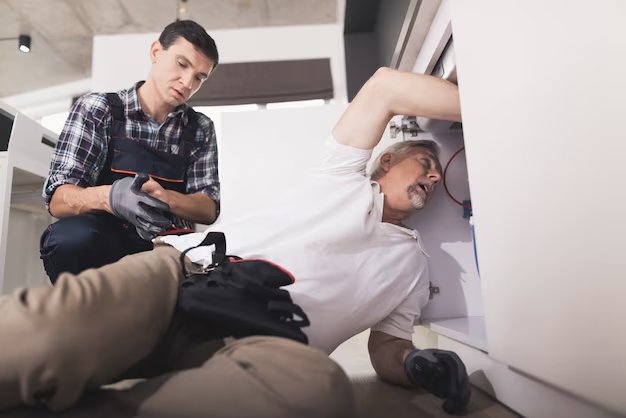How to Effortlessly Remove Dents from Your Refrigerator
Dents can be a real eyesore on your otherwise pristine refrigerator. Whether they’re from a stray elbow while hosting a dinner party or an unfortunate encounter with a kitchen appliance, dents disrupt the sleek aesthetic of your kitchen’s centerpiece. Fortunately, removing dents from refrigerators doesn’t need to be daunting or expensive. This guide explores various methods to tackle those pesky dents, offering detailed insights into practical solutions and valuable tips to restore your fridge's flawless appearance.
🎯 Understanding the Problem
Before diving into solutions, it’s crucial to understand the nature of the problem. Refrigerators, depending on their finish, may have varying resilience to dents. Most modern fridges come in stainless steel, plastic, or various composite materials, each of which reacts differently to pressure and manipulation. Knowing the material of your fridge can greatly influence the method you choose for dent removal.
Why Do Dents Occur?
- Heavy Traffic Areas: Kitchens are often high-traffic zones, making accidental bumps and knocks common.
- Loose Items: Nearby items like chairs or stools that fall or swing can easily cause dents.
- Appliance Movements: Large appliances that shift slightly during operation can bump into the refrigerator.
Common Types of Dents
- Shallow Dents: These are surface-level and don’t significantly affect the underlying structure.
- Deep Dents: Deeper, sharper depressions can implicate more intense pressure or collision impact.
🔧 Fixing Dents: The DIY Methods
Now, onto the exciting part—how to fix those dents efficiently. These methods focus on straightforward DIY approaches that you can accomplish with items you likely have at home.
H2: Using Heat and Cold Treatments
Thermal Expansion and Contraction Method
Materials Needed:
- Hairdryer or heat gun
- Canned air (inverted)
Steps:
- Heat Application: Begin by using a hairdryer or heat gun to warm the dent area evenly. Maintain a few inches of distance to avoid damaging the finish. Aim for a minute or so until the metal expands slightly.
- Rapid Cooling: Quickly invert a canned air canister, spraying the now-warm dent area. The cold air causes the metal to contract swiftly. This rapid temperature change may pop the dent back into place.
H2: Pushing and Pulling Out Dents
The Suction Method
Materials Needed:
- Plunger or dedicated suction cup tool
Steps:
- Positioning: Place a small amount of water around the dent for better conformity. Position the suction cup or plunger directly over the dent.
- Action: Press firmly to secure suction, then pull sharply. Repeat as necessary to gradually lift the dent out.
The Rubber Mallet Approach
Materials Needed:
- Rubber mallet
- Thick cloth (for protection)
Steps:
- Prep the Area: Wrap the head of the mallet with cloth to avoid scratching.
- Inside Access: If accessible, reach the backside of the dent. Apply gentle taps using the mallet around the dent edges, working towards the center.
H2: Complex Dent Solutions
For difficult dents, especially those on stainless steel, more advanced techniques may be required.
Boiling Water and Compressed Air
Materials Needed:
- Boiling water
- Compressed air (inverted)
Steps:
- Heating: Carefully pour boiling water over the dented area.
- Cooling: Immediately follow with inverted compressed air to cool and contract the dent.
H2: Professional Options
When DIY solutions don’t suffice or if you’d rather not take the risks, considering professional services is a worthwhile option.
Automotive Paintless Dent Repair (PDR) Technicians
- Use specialized tools to manipulate and massage the dent out from the inside.
Certified Refrigerator Repair Services
- Technicians trained in appliance repair can provide a more tailored approach for specific refrigerator models.
🏡 Maintaining a Dent-Free Refrigerator
Preventing dents can save time and effort in the long run. Consider these maintenance and preventive tips:
- Strategic Placement: Keep the refrigerator in low-traffic areas where it’s less susceptible to accidental bumps.
- Use Furniture Caster Cups: These can help absorb shocks from nearby furniture movements.
- Install Protective U-Shaped Guards: They can minimize direct impact in case of a collision.
📋 Handy Summary: Essential Tips for Managing and Preventing Dents
Here's a quick list of actionable steps when dealing with refrigerator dents:
- 🥶 Heat then Cool: Use a hairdryer and inverted canned air spray for rapid treatment.
- 🛠️ Suction or Tap: Employ plungers or mallets for manual realignment.
- 🚪 Professional Help: For persistent dents, opt for Paintless Dent Repair or certified technicians.
- ⚠️ Prevention First: Position your fridge wisely and use shock absorbers.
By understanding the nature of your refrigerator's finish and the impact dynamics, you'll be better equipped to tackle dents confidently. With these approaches, you can ensure your kitchen's focal point remains just as impressive as ever.
